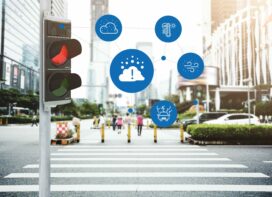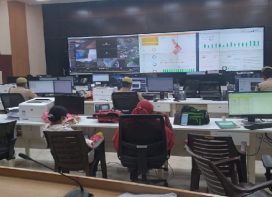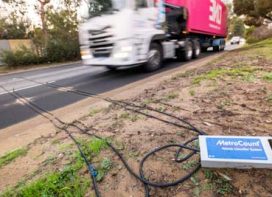He wants to bring BEST’s glorious years back – despite the odds. Despite the accumulated losses of र3000 crore over the last eight years. Despite the sudden 25% increase in the fleet of buses without any infrastructure support. Despite the general negative perception about his drivers. Installing cameras in buses to provide safety, unified passenger information system, electronic machines to issue tickets and smart cards for easy travel are some of the initiatives taken against this challenging scenario. And now in 2012-13, O P Gupta, General Manager, Brihanmumbai Electric Supply and Transport promises to give the undertaking, for the first time in 15 years, its first break-even year. Vidyottama Sharma brings you his pride on BEST’s legacy, his challenges in the present and his plans for the future.
BEST pays heavy taxes for buses, gets low revenue and yet, the car owners walk away with sympathetic policies despite congesting the roads. Do you feel victimised by this step motherly treatment?
 Basically, it’s the question of focus on a particular policy. For quite some time, public transport in cities was not given the priority in government policies the way it used to be done earlier. Neither were decisions taken to promote public transport nor were proper policies framed. Infrastructure support, like providing place for bus stops and efficient boarding & alighting by passengers without blocking the carriageway, was not on the agenda of the transport planners. Now when we look back, yes, we do feel that we have lost opportunities and that we could have better utilised the situations. I will not call it victimisation though.
Basically, it’s the question of focus on a particular policy. For quite some time, public transport in cities was not given the priority in government policies the way it used to be done earlier. Neither were decisions taken to promote public transport nor were proper policies framed. Infrastructure support, like providing place for bus stops and efficient boarding & alighting by passengers without blocking the carriageway, was not on the agenda of the transport planners. Now when we look back, yes, we do feel that we have lost opportunities and that we could have better utilised the situations. I will not call it victimisation though.
If you make a complaint against a bus driver, it does get due response, the person gets reprimanded or punished. Last year we punished almost 5000 drivers in one year for different reasons.
But now, after the formation of JNNURM (Jawaharlal Nehru National Urban Renewal Mission) and the Government of India coming up with a National Urban Transport Policy, focus is shifting again towards providing mass public transport in the big cities.
 A few initiatives are in the pipeline like the proposed corridor systems, freeways, sea links and new express routes using flyovers. Where does BEST stand vis-a-vis these?
A few initiatives are in the pipeline like the proposed corridor systems, freeways, sea links and new express routes using flyovers. Where does BEST stand vis-a-vis these?
Running buses on freeways or corridors or sea links are initiatives by BEST to increase the speed of buses and to try and provide faster mode of transport to the bus users. The corridor service, however, didn’t find the success I had anticipated simply because the roads are blocked in peak time. So, even the corridor service gets entangled in the traffic. And flyovers or sea links again are common traffic lanes for everybody. There have been discussions on providing dedicated bus lanes or the BRTS corridor, but it has still not taken shape and buses are running on the common roads.
When is BEST finally going to get dedicated lanes? Talks are on for a long time but will BRTS ever be a reality in Mumbai?
People often get confused. Let me clarify the situation. As per the law of the country, BEST is an undertaking which operates the bus service for the city of Mumbai. It has no legal authority to do anything regarding the planning for traffic, roads or infrastructure. Then, if you need to introduce BRTS or provide a dedicated bus lane, you have to prohibit people from using that particular stretch of road for private vehicles or any other vehicles. Only the buses or vehicles notified by competent authorities in the Bombay Police Act or Motor Vehicle Act or MMRDA ACT, etc., will be able to use those roads. A notification calling for public objections will have to be issued because people – especially car owners – who are likely to have a lane reduced from their current driving space, may object. This entire process needs to be carried out in a systematic and phased manner with a very specific focus to actually implement the system. That decision has to be taken by the competent authorities in the government. I cannot take such decisions.
You mean all these years the competent authorities never tried to do anything about it despite the frustrating traffic scene of the city?
Discussions for BRTS and dedicated bus lanes have been taking place in general forums but nobody has yet tried to go into the nitty-gritty as to how it will be done and what modalities will need to be carried out. Now recently, MMRDA has commissioned a study to check out the basic feasibility of BRTS. As per my knowledge, the report has been submitted to MMRDA. It probably indicates that there is a likelihood of up to 70% traffic congestion on the remaining space on roads in the initial years till the time the traffic moves from the private vehicles to BRTS buses.
In the direction of peak traffic in Mumbai, if as a private vehicle owner, you are not sure of your own car, your own driving skills, how can you expect a bus driver who has to be a part of this traffic, to ensure that his bus will reach on time?
Then, it brings us to the issue that this is likely to have negative reactions from people who are using that space today. The reactions to BRTS in Delhi and Pune have made the planners and decision makers very cautious today. So, until and unless all these issues are settled, I am really not sure whether a decision will be taken on BRTS and dedicated lanes.
But then, it may not go wrong everywhere else because Ahmedabad BRTS is a great success.
Precisely. We learn from wrong experiences and therefore, I am not willing to be a party to a decision which is taken in haste. I want a comprehensive proposal from one point to other point which incorporates all the concerns in the beginning itself. Otherwise, it will bring BEST a bad name. And therefore, I do agree with the cautious approach being adopted in Mumbai. It may take time but let it evolve in proper shape. Ahmedabad is different from Mumbai. It is spread out, alternate roads are available and it probably even has area to increase the road width for BRTS and add additional bus lanes but Mumbai roads offer no such luxury.
BEST incurs losses to the tune of 400 to 500 crore per year…
If you go through the BEST history, its Transport division has been making losses for the last 30-40 years. But in those days, the authority to fix the tariff of transport as well as the electric supply divisions lay with BEST itself. The tariff was fixed in such a way that the losses incurred in the transport division were offset by the surplus in the (electric) Supply division. This unique cross subsidy system functioned so well that both the divisions kept growing while taking care of the needs of the city. Since BEST is a public body, profit making was never an issue. Therefore, the apportionment of revenues and income was such that you only generated enough surplus to meet your expenditure requirement and passed on the remaining as subsidies to the people. So, the public transport has been highly subsidised since early times.
I have just recently revised the fares. The minimum fare for the buses was `4 since 2001. After 2003 when electricity regulator refused to agree to certain provisions in the Act, the Transport division sort of became a stand-alone division. Its association with the Supply division was cut off. The ideal situation should have been to revise the fares to the extent that your revenue – income and expenditure – matches that of the transport division. But that didn’t happen. Expenses had grown as salaries, diesel prices, the cost of spare parts & maintenance and other expenses had doubled in a decade while the ticket prices were kept more or less the same. The BEST price as a capital cost had gone up too. That was the reason the BEST’s deficit in terms of revenue and expenditure in transport division kept growing.
Your routes need to be redefined. They are destination oriented instead of direction oriented…
You cannot do that because in the morning people travel only towards CST (Chhatrapati Shivaji Terminus), i.e., to go to their offices. In cities like Bangalore or Delhi which are widely spread – you can plan a bus trip and a route where the bus will keep running continuously from one point to other and second point to the third. In Mumbai, when you need to increase services in the up direction, you have to take back those ten buses to run those routes even if nobody is travelling in the opposite direction. You have only a single route from one destination to the other. You cannot go to various places and then reach the original destination.
 TrafficInfraTech Magazine Linking People Places & Progress
TrafficInfraTech Magazine Linking People Places & Progress


